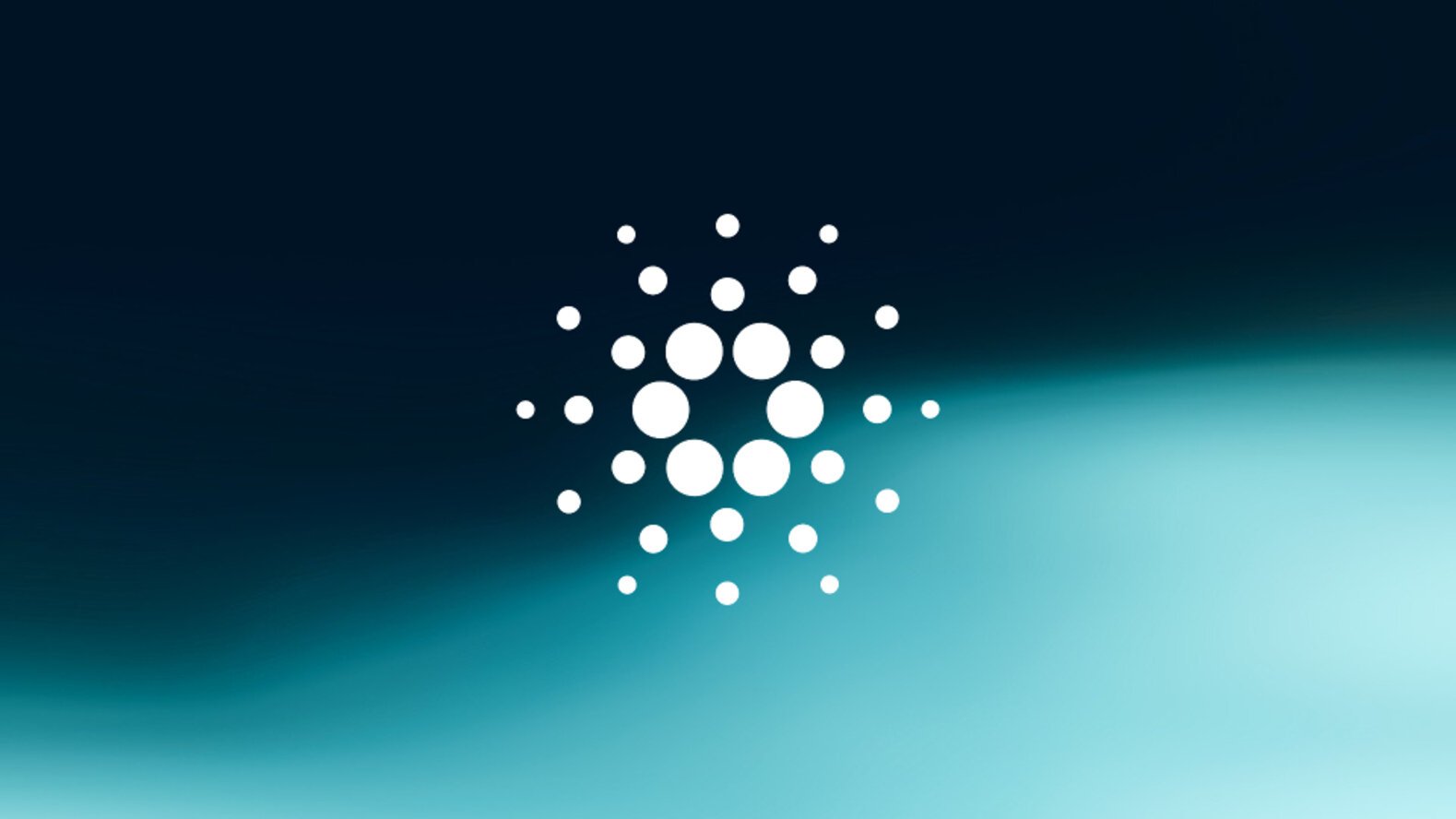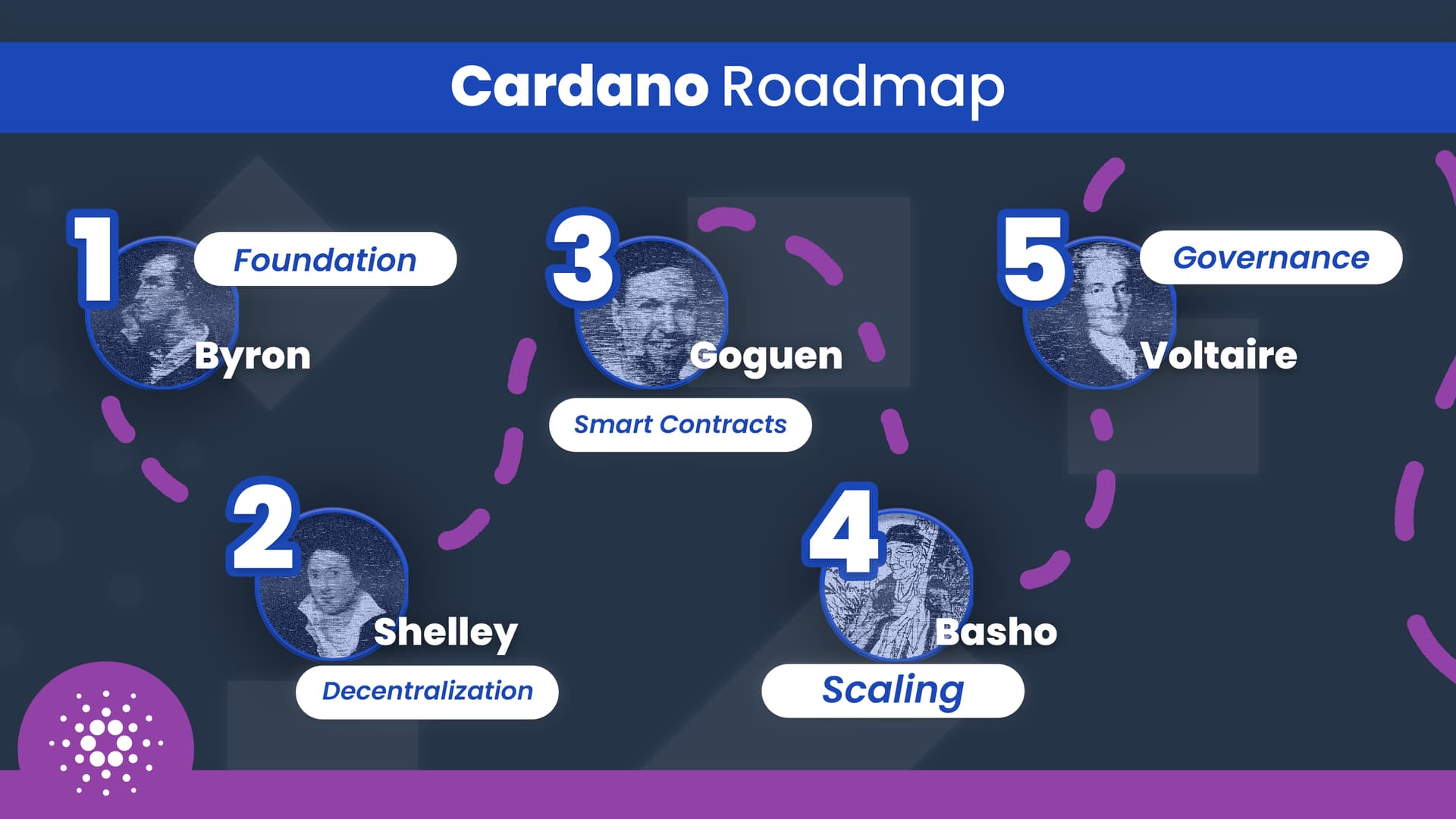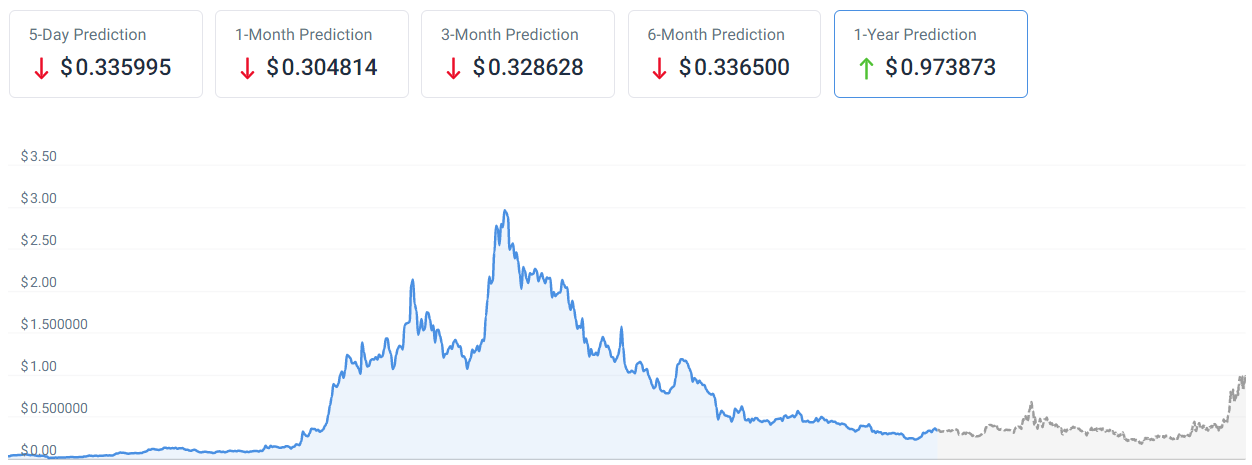Cardano is one of the most popular cryptocurrencies out there. It has been a long-standing member of the crypto top 10, and boasts a dedicated community of users and investors.Since smart contracts have been enabled on the Cardano blockchain, we’re now seeing a growing number of DeFi, NFT and other projects opt for Cardano as their platform of choice.
Even though Cardano has a lot going for it, you shouldn’t expect Cardano to reach $100 any time soon.
The ADA price has seen its fair share of ups and downs ever since the Cardano mainnet went live in 2017. The coin successfully survived the 2018-2019 cryptocurrency bear market, and went on a stunning rally in 2021.
Cardano’s all-time high came in September 2021, when the price of ADA hit a price of $3.10. At that point, the market capitalization of Cardano was approximately $95 billion. However, some Cardano investors believe the potential upside of Cardano is much higher, and we often see $100 being proposed as a potential Cardano price target. So, can Cardano reach $100 at some point in the future?
We’ll compare Cardano’s market cap with direct competitors like Ethereum, as well as some of the world’s largest companies in order to get a better idea of what ADA at $100 would actually mean.
Before we take a look at whether Cardano will hit $100, let’s quickly refresh our knowledge of this popular blockchain project.
Cardano - A unique Proof-of-Stake platform for smart contracts

Cardano is a blockchain project that was founded in 2015 by Charles Hoskinson, an American entrepreneur that was also one of the co-founders of Ethereum. To fund development, Cardano held an Initial Coin Offering (ICO), raising around $62 million.
The Cardano mainnet went live in September 2017 with limited functionality. Over the subsequent years, Cardano received a series of upgrades which enhanced the platform’s decentralization and introduced key features including Proof-of-Stake consensus and smart contracts functionality.
The native asset of the Cardano blockchain is called ADA. ADA is necessary for paying transaction fees, and is also used to incentivize validators to secure the network.
Cardano is known for its ambitious roadmap and a methodical approach to development, which borrows heavily from peer review concepts. The Cardano blockchain utilizes a provably secured Proof-of-Stake consensus protocol called Ouroboros.
Compared to most other smart contract-enabled blockchains, Cardano is unique since it utilizes the EUTXO (Extended Unspent Transaction Output) model for transactions. Another feature that makes Cardano stand out is that its Plutus smart contracts language is based on Haskell, a programming language that is well suited for formal verification.
Can Cardano reach $100?
Since Cardano is a platform for smart contracts, it’s probably best to compare it to Ethereum, the current leader in this sector. At its very peak, the market capitalization of ETH was roughly $550 billion.
At the time of writing, the circulating supply of Cardano’s native asset ADA is roughly 34 billion coins. If ADA had a price of $100, the Cardano market capitalization would be $3.4 trillion, about 6 times larger than Ethereum’s all-time high market cap.
| ADA price | Implied market cap |
|---|---|
| $5 | $170 billion |
| $10 | $340 billion |
| $20 | $680 billion |
| $50 | $1.7 trillion |
| $100 | $3.4 trillion |
The market cap calculations assume a supply of 34 billion ADA.
Given that Cardano has much less adoption than Ethereum, it would be difficult for it just to match Ethereum’s market capitalization, let alone exceed it by a factor of 6. At the time of writing, the Cardano users are making about 62,000 transactions per day, while Ethereum users are making about 950,000 transactions per day (despite Ethereum having much higher fees than Cardano).
At $100, ADA’s market cap would actually be larger than the all-time high total cryptocurrency market cap, which peaked at roughly $2.9 trillion in November 2021.
At $100 per ADA, Cardano’s $3.4 trillion market capitalization would also be larger than any company in the world as of January 2023. At the time of writing, the three most valuable companies by market capitalization are Apple ($2.2 trillion), Saudi Aramco ($1.9 trillion) and Microsoft ($1.8 trillion).
From these comparisons alone, we can see that it would be extremely difficult for ADA to reach $100. ADA would need to increase in price by 270x from its current price to reach $100, an extremely difficult feat for an asset that already has a market cap of $12.7 billion.
The only way ADA could feasibly reach a price of $100 is if the supply of the coin was significantly reduced. However, there’s no ADA burning mechanism in place, so it’s not really reasonable to expect the ADA supply to decrease significantly in the future.
Cardano price prediction - Will Cardano go up in the future?
Even though we think that Cardano reaching $100 is highly unlikely, that doesn’t mean that Cardano doesn’t have potential to increase in price.
From a fundamental standpoint, Cardano still has a lot of upside potential since the project still has many key milestones ahead of it. The roadmap for Cardano development is split into 5 major phases, which are also called eras. Here’s how they can be summarized:
- Byron - Foundation
- Shelley - Decentralization
- Goguen - Smart contracts
- Basho - Scaling
- Voltaire - Governance

While progression along these roadmap phases is not completely linear, the Cardano project can now be said to be in the smart contracts-focused Goguen phase. The focus of the project’s current releases is still to enhance Cardano’s smart contracts functionality.
For example, the next Cardano upgrade, which is targeted for February 2023, will expand the set of built-in functions of Cardano’s Plutus smart contract programming language. The upgrade will also introduce support for ECDSA and Schnorr cryptographic signatures, which will make it easier to deploy cross-chain applications on Cardano, according to Cardano development firm IOHK.
1/10: The next Cardano upgrade targeted for February will bring new built-in functions to #Plutus, the smart contract programming language for the #Cardano blockchain, to support ECDSA and Schnorr cryptographic signatures to make it easier for developers to build cross-chain apps
— Input Output (@InputOutputHK) January 19, 2023
The next major phase of Cardano’s development roadmap will be especially interested, since scalability is arguably the most important issue facing smart contracts blockchains today.
As we saw in the 2021 cryptocurrency bull market, Ethereum becomes extremely expensive to use during periods of high demand. This has created an opportunity for other projects, whether we’re talking about alternative layer 1 blockchains or layer 2 platforms built on top of Ethereum, to showcase their scalability.
Cardano is one of the alternative layer 1 blockchains that are looking to displace Ethereum as the number one option for smart contracts and decentralized applications. Other notable contenders include Solana, Avalanche, Algorand, Aptos and several others.
The Cardano project plans to boost scalability through improvements on layer 1, as well as by providing layer 2 solutions that function on top of the Cardano blockchain. Some approaches that will help the Cardano layer 1 scale are block size increases and improvements to the Plutus smart contracts language.
Cardano’s layer 2 solution will be called Hydra, which will use isomorphic state channels to provide a highly scalable platform that uses the Cardano layer 1 as the secure settlement layer.
If Cardano’s future upgrades can be implemented as expected, Cardano will become a formidable blockchain that will support widely used decentralized applications while keeping transactions fast and fees low. This could provide the foundation for the widespread adoption of Cardano, which would contribute to an increase in demand for ADA, and consequently boost its price.
One way of quantifying ADA’s upside is to simply look at the price the coin has already reached in the past. If we take Cardano’s all-time high as the benchmark, we can see that the ADA price would have to increase by about 8.3x from its current price to reach its all-time high again. So, buying ADA at current prices could be a good option if you believe in the long-term potential of the project.
If you’re looking for additional ideas about potential future Cardano price moves, check out our ADA price prediction section.

The bottom line - Don’t expect Cardano to hit $100, but it could still have a lot of upside
As we’ve hopefully demonstrated, it’s not reasonable to expect Cardano to reach $100, as that would mean a market cap of about $3.4 trillion for ADA. Simply put, we haven’t seen anywhere near enough adoption and potential from Cardano to even speculate about such a valuation.
So, how high can Cardano go? Despite some crypto investors asking themselves if Cardano is dead, Cardano reaching and exceeding its current all-time high of $3.10 is definitely possible if we have another major cryptocurrency bull run in the future. The chances for this will improve if Cardano developers continue to successfully execute their ambitious roadmap.
However, please keep in mind that even though the crypto markets tend to be cyclical, there is no guarantee that any cryptocurrency will ever match its all-time highs. For example, there’s quite a few crypto projects that peaked in the 2017 bull run and haven’t matched their all-time highs since.
If you’re interested in more cryptocurrencies that have a lot of potential for the future, check out our article covering the next cryptocurrencies to explode in value.
 coincodex.com
coincodex.com